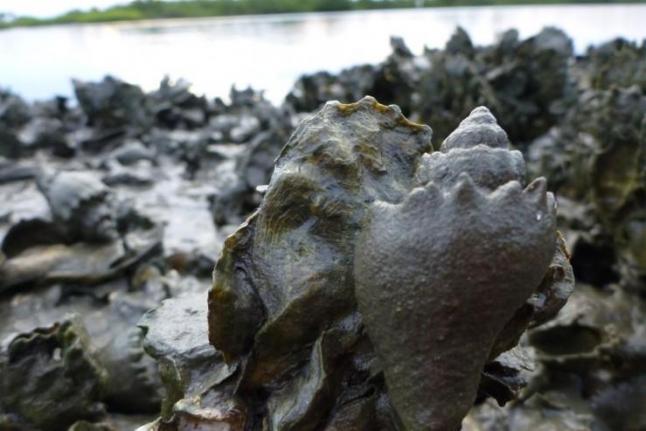BOSTON, Aug. 14 (Brooks Hays) — In Florida, oyster reefs are shrinking. The mollusks’ collapse is being blamed on a rise in water salinity and an influx of a species of carnivorous conchs.
A new study by scientists at Northeastern University paints a rather ugly picture of oyster health. The researchers found that drought-starved estuaries are becoming saltier, paving the way for takeovers by carnivorous conchs.
Saltier water, researchers found, encourages the proliferation of conch larvae, which feed off oysters as they mature.
Pollution, habitat loss, increasing ocean acidity and over-harvesting are exacerbating the threat of invading predators. And researchers say the loss of oysters aren’t just bad for restaurant menus, but for the health of valuable ecosystems.
“Coastal ecosystems around the world depend greatly on the services provided by oysters,” David Kimbro, a marine and environmental sciences professor at Northeastern,explained in a press release. “They are important for the stabilization of shorelines, filtration of coastal water, protection of important economically valuable fishes and invertebrates, and the removal of excess nitrogen.”
There are plans in place by governments and conservation organizations to save oyster populations. But Kimbro and his colleagues say restoration efforts will ultimately fail if water salinity remains a problem.
“Environmental change and consumer pressure — the conchs being the consumer — can impact foundation species like oysters on their own,” Kimbro said. “But we have a case here where it is the interaction between the two stressors that is causing the greatest impact on the decline of the oysters.”
If salinity resides, oysters may be able to rebound, Kimbro says. Conch can actually be beneficial at moderate levels, encouraging oyster production by leaving preyed-upon adult shells open for oyster lavae to colonize.
But with drought becoming increasingly common in a changing climate, an overabundance of conchs may be a longterm problem for oyster-supporting estuaries.
The new research is published in the journal PLOS ONE.






